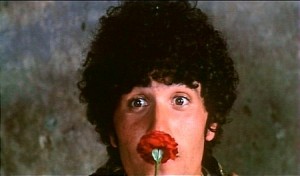STUDIO: Criterion | DIRECTOR: Pier Paolo Pasolini | STARS: Franco Citti, Ninetto Davoli, Hugh Griffith, Tom Baker, Jenny Runacre, Ines Pellegrini
RELEASE DATE: 11/13/12 | PRICE: DVD $79.95, Blu-ray $79.95
BONUSES: Visual essays by Patrick Rumble and Tony Rayns; interviews with Ennio Morricone, production designer Dante Ferretti and critic Sam Rohdie; documentaries about missing scenes from the films; “Via Pasolini”; and “Pasolini and the Form of Cities”
SPECS: R/NC-17 | 352 min. | Foreign language comedy-drama | widescreen | Dolby Digital stereo | Italian with English subtitles
Showcasing three of the most accessible and blatantly entertaining of Pier Paolo Pasolini’s dozen fiction features, the four-disc Pasolini’s Trilogy of Life collection offers a fascinating glimpse at the cinema-poet’s very pungent and sensual notion of erotica, as well as his very evident love of the art of storytelling.
Pasolini reached back to classical literature — and most importantly populist classical literature — to reflect upon sexuality and human behavior. Each of the films has its own individual merits, but the first, The Decameron (1971) is by far the biggest audience-pleaser while the third, Arabian Nights (1974), is the most “exotic” entry. The Canterbury Tales (1972) has its simple joys and winningly vulgar short tales, but there is an oddly grim tone to the proceedings, with the finale given over to one of Pasolini’s most extreme landscapes — a steaming, unforgettable image of hell (constructed on Mount Etna) in which, among other strange twists, demons excrete friars.
All three films provide models of how to tell multiple stories within the framework of a single film. Decameron and Canterbury have a barely verbal authorial presence appearing between some of the stories (Pasolini himself, playing “Giotto’s best student” in the first and Chaucer in the second). Arabian Nights has a highly intricate structure, with one story running the length of the film and providing a frame device for all the others.
What is most radical in all three films, however, is that Pasolini frequently abandons his frame devices and simply starts a new story when the preceding one has reached its “punchline.” In this way viewers will feel like they are paging through a book, without the “reassuring” voice of a narrator.
Although the films were promoted during their initial American runs as arthouse erotica (read: softcore for couples), Pasolini’s intention with this trilogy, as is repeatedly stated in the many supplements included here, was to harken back to a time when sex was guilt-free and had yet to be “corrupted” by capitalism. The trilogy is chock-full of nudity and many vulgar jokes, but they are worlds away from any sort of mainstream pornography.
As is customary with Criterion releases, the supplements in the box are impeccable and incredibly informative. The short documentary “Via Pasolini” composed of fascinating snippets from Sixties and early Seventies TV interviews with the filmmaker. Visual essays by critics Patrick Rumbler and Tony Rayns contextualize and explain each feature, and new interviews with production designer Dante Ferretti and master composer Ennio Morricone supply personal perspectives on what it was like to collaborate with Pasolini.
One gets the impression watching The Trilogy of Life that Pasolini was most interested in using modern storytelling techniques to “resurrect” three classic books for a new era. When taken together as one big work, the Trilogy is among the filmmaker’s most significant, and certainly most entertaining, achievements.
|
Buy or Rent Pasolini’s Trilogy of Life
|
|||
|---|---|---|---|
DVD |
 DVD | Blu-ray DVD | Blu-ray |
 DVD | Blu-ray DVD | Blu-ray |
|

Leave a Reply